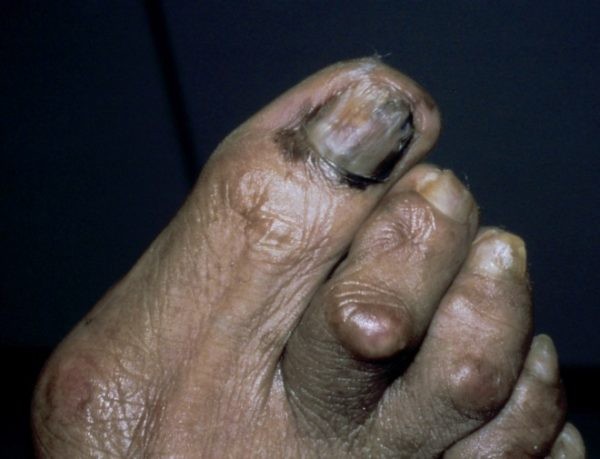Bob Marley, the iconic Jamaican singer-songwriter who popularized reggae music worldwide, remains a cultural legend even decades after his passing. His music and message of peace and love continue to inspire generations. However, his life was tragically cut short by a battle with cancer. Many fans and those just discovering his legacy often ask: How Old Was Bob Marley When He Died?
Bob Marley was only 36 years old when he died in 1981. Born on February 6, 1945, his untimely death was due to acral lentiginous melanoma, a rare and aggressive form of skin cancer. Initially misattributed to a soccer injury, the dark spot under his toenail turned out to be a serious health threat that ultimately claimed his life. Understanding the circumstances surrounding his illness and death is crucial for raising awareness about this type of melanoma and the importance of early detection.
The Diagnosis: Acral Lentiginous Melanoma
In 1977, Bob Marley noticed a dark spot beneath his toenail. Thinking it was a bruise from playing soccer, he initially dismissed it. However, this dark spot was not a simple injury. It was acral lentiginous melanoma (ALM), a type of melanoma that develops on the palms, soles, or under the nails. The term “acral” refers to the extremities of the body, and “lentiginous” refers to the freckle-like appearance of the melanoma.
Unlike more common melanomas primarily linked to UV radiation from sun exposure or tanning beds, acral lentiginous melanoma is less associated with sun exposure. Genetic factors are believed to play a more significant role in its development. While ALM is rare overall, it is notably the most common type of melanoma diagnosed in people of color. This highlights the importance of skin cancer awareness across all skin types.
The Hidden Danger and Delayed Treatment
One of the challenges with ALM is its location in less sun-exposed areas, which can lead to delayed detection. People may not think to regularly check these areas for signs of skin cancer. In Bob Marley’s case, the initial misdiagnosis as a soccer injury further delayed appropriate medical intervention.
Doctors recommended the surgical removal of his toe to treat the cancer. However, due to his Rastafarian beliefs and concerns about his dancing ability, Marley refused amputation. He opted for a less radical excisional surgery, where the nail bed and cancerous tissue were removed. Unfortunately, this treatment proved insufficient to eradicate the melanoma completely.
Multiple examples of Acral lentiginous melanoma (ALM). Recognizing these signs and seeking prompt medical advice can significantly improve outcomes.
The Spread and Tragic Outcome
Despite the initial surgery, the melanoma metastasized, meaning it spread to other parts of his body. It reached his brain, liver, and lungs, becoming increasingly aggressive. By 1980, the cancer had spread significantly, and despite further treatments, Bob Marley’s condition deteriorated. He passed away on May 11, 1981, at the young age of 36, leaving behind a profound legacy and a somber reminder of the importance of early cancer detection and treatment.
The Importance of Skin Checks for Everyone
Bob Marley’s story serves as a powerful reminder that melanoma can affect anyone, regardless of age, skin tone, or lifestyle. While acral lentiginous melanoma is rare, it underscores the critical need for regular skin self-exams. It is essential to check the entire body, including areas that are not typically exposed to the sun, such as:
- Palms of the hands
- Soles of the feet
- Under fingernails and toenails
Any new, changing, or unusual spots should be promptly evaluated by a dermatologist. Early detection of melanoma significantly improves the chances of successful treatment and survival. For melanoma diagnosed in its early stages, the five-year survival rate is very high. However, for those diagnosed at a later stage, like in Bob Marley’s case, the prognosis is less favorable. For Black people diagnosed with melanoma, the five-year survival rate is around 70 percent, often because of later stage diagnosis.
Join the #LoveYourSkin Campaign
In honor of Bob Marley and to promote skin cancer awareness, especially within communities of color, the Skin Cancer Foundation encourages everyone to participate in the #LoveYourSkin campaign. This public awareness initiative focuses on skin cancer education, early detection, and sun protection for all skin types.
Bob Marley’s legacy encourages skin cancer awareness. Share facts and promote early detection using #LoveYourSkin.
You can get involved by following the Skin Cancer Foundation on social media, sharing informative posts, and using the hashtag #LoveYourSkinProtectYourSkin. By working together, we can increase awareness, share vital information, and potentially save lives by emphasizing the importance of loving and protecting your skin. Bob Marley’s memory lives on not only through his music but also through the vital message of health awareness his story imparts.
Learn More About Skin Cancer and Melanoma:
Skin Cancer & People of Color
Melanoma Warning Signs & Images
Skin Cancer Pictures
